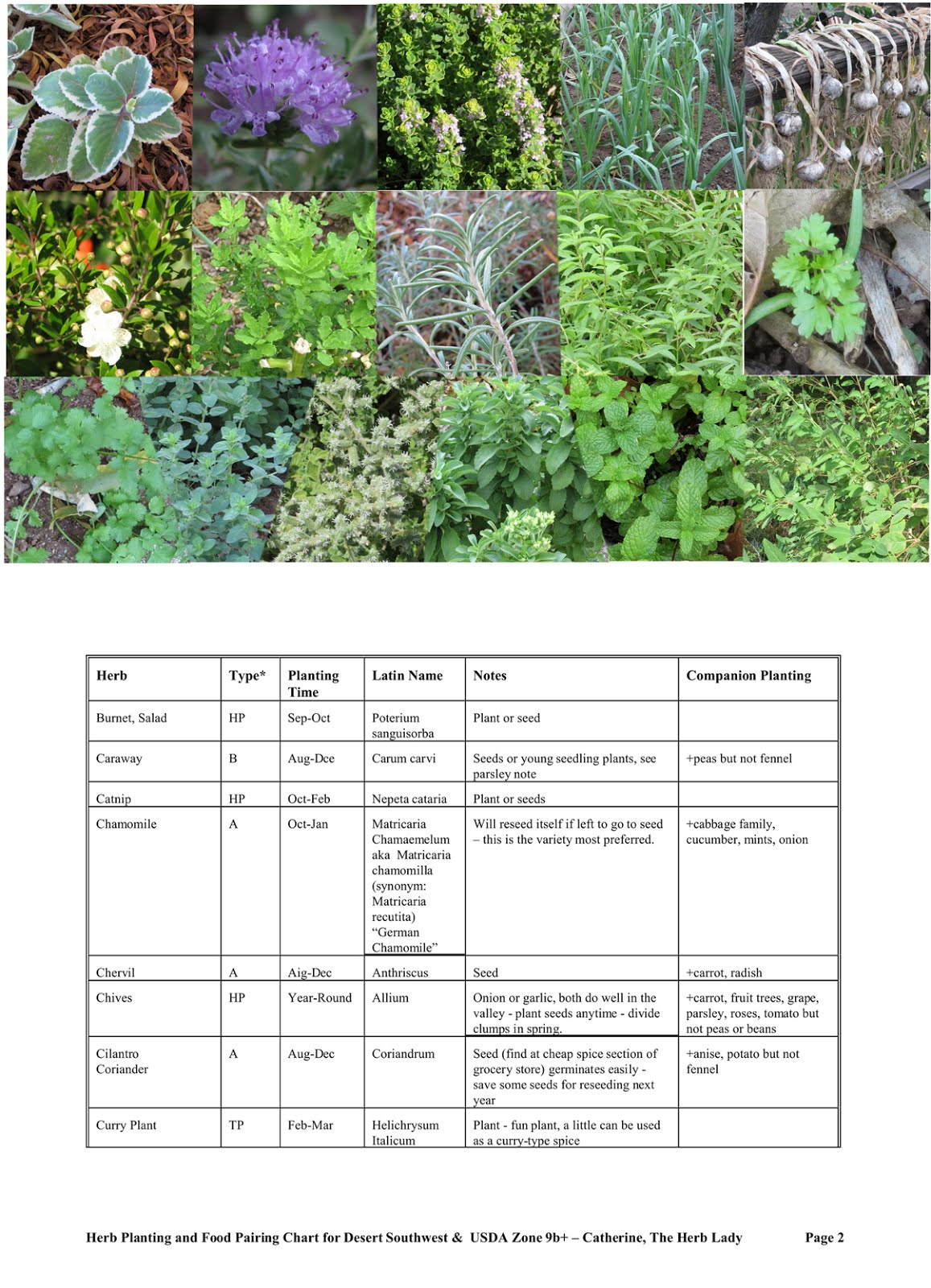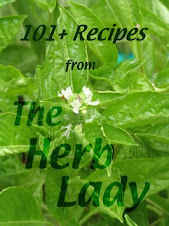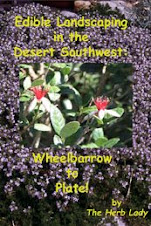Dear Folks,
I want to thank all of you who took the time to take my little survey back at the beginning of the month.
I also received an additional comment about more monthly planting information.
Here are the results of the survey:
desert gardening (87%)
edible landscaping in the desert (75%)
culinary herb gardening (50%)
more like my 25 days of Herbs & Celebrations (50%)
cooking from the garden (37%)
more on edible flowers (37%)
healthier recipe versions of traditional foods (25%)
chickens, ducks, goats (0%)
I'm going to take these one at a time and comment. If you wish to add a comment, please do, it helps me know what you need to be more successful in YOUR garden.
Desert Gardening (87%)
In looking at the interest in this option I probably should have been more specific, because what I had in mind was Native Edibles. So I'm going to go with that as the focus. If any of you had something different in mind I would like to know that!
Native plants are, of course, more tolerant of our desert conditions, require less watering than your usual veggie, fruit and citrus tree gardens, and have a cultural significance that makes them attractive over and above their edibility and other uses.
I would encourage you to check out Jean Groen's growing (pun intended) list of books on foods of the Sonoran Desert and other areas of the state.
Jean is a friend and as knowledgeable an expert on desert foods as I try to be on the 'traditional' garden-grown foods.
Order via sending her an email through the website. You can also find her books at the Boyce Thompson Arboretum bookstore. Or find some of her books on Amazon. I recommend starting out with "Foods of the Superstitions Old and New"
With that in mind, many of the food plants most gardeners so like, such as corn, melons and squash, have native heirloom varieties. Those are regionally adapted for this climate, but also take a bit more water than true desert plants.
Take Mesquite for example. This wonderful bush/tree has edible pods, provides shade, requires no watering once established (they do grow taller etc. if they get regular watering) and can be used to reclaim fallow areas in order to establish a vegetable garden. I will post more on that in a future blog.
Prickly Pear and Jojoba are some of the best known edibles. Both do well in a low/no water use garden. The Prickly Pear has edible flower, fruit and pads (being mindful of the thorns and glochids (hairy base of thorns). I will discuss these and more in future blogs.
Edible Landscaping in the Desert (75%)
My top passion. Upon arriving in Arizona in the 70s I discovered that there was no summer only gardening, but all-year gardening.
Like many new-comers it took be a bit to start understanding that spring fever enthusiasm for planting EVERYTHING as soon as the temperature was in the mid-70s to 80s was NOT a key to growing things.
What actually began as a need to put more flavor in my cooking through culinary herbs and spices (due to family salt and fat restrictions), morphed into a true passion to try and grow everything I tasted.
I found the concept of edible flowers intriguing - color and safety in my food and color and happy pollinators in the gardens. Win/Win for everyone and everything.
Gradually I discovered that trialing a couple of each type of plant in different areas of the gardens yielded not only successes but also what did not work, at the same time observing the timing of planting and sowing. As each variety showed me where and when it was happiest, I also learned to take that learned knowledge and apply it to what might be considered exotic food plants. I was insatiably curious about new-to-me veggies and herbs from other cultures. I read and researched every chance I got, purchased plants and seeds to add to my trialing. I quizzed folks of ethnic backgrounds on what their grandparents and parents grew and ate.
That proved to be both a challenge and a delight. While at the farmers market I would ask someone what their ethnic heritage was. This almost always, initially, brought a guarded look and answer. When I told them I wanted to know what their grandparents or parents grew and cooked with - the delight just lite up their faces and I listened and learned..
The results in my gardens with all of my Trowel & Error gardening yielded an amazing result. I have found very, very few food plants that cannot be grown here.
The key is always, always to plant at the right time for the variety.
Culinary Herb Gardening (50%)
More Like My 25 Days of Herbs & Celebrations (50%)
The breadth of culinary herbs may seem small, but the range within families is quite large. You could use a different flavor of basil every day for a month and not exactly repeat the flavor.
I will weave posts on culinary herbs into the Edible Landscaping posts. It is interesting to me that so many folks view of herbs begin with a notion that herbs in the garden are unattractive and relegated to the back of the yard, out of view.
Most herbs are not only attractive, their flowers are edible (fragrant and tasty like the herb itself) and while some are 'plain' some are just drop-dead gorgeous plants in or out of bloom.
I am so pleased many of you enjoyed the 25 Days of Herbs and Celebrations. I will definitely keep the concept of series in mind when choosing topics.
Cooking from the Garden (37%)
More on Edible Flowers (37%)
I have to pay more attention to my recipe building as this survey result would indicate I don't always showcase what I used from the garden. I do regularly create or re-share recipes but I don't always mention when I worked from the garden harvests. I need to get better at that :-)
The range of edible flowers goes from vegetable and herbs flowers (sugar pea flowers and basil flowers) to old-fashioned cottage beloved flowers like hollyhock, stock and nasturtium.
I will try to do a blog post which incorporates more discussion on individual edible flowers with appropriate planting/sowing time. The great thing about edible flowers, here in the desert, is you can have edible flowers in bloom every month of the year including the summer.
Healthier Recipe Versions of Traditional Foods (25%)
Chickens, Ducks, Goats (0%)
Okay no discussions that only focus on chickens, ducks or goats - got it! However if you have the place and a need for "fresh" -- goats milk (and yogurt and cheese made from it) is wonderful along with your own chicken and duck eggs. There are side benefits for your gardens too - fertilizer :-)
Healthier Recipes. I am more and more interested in making my own version of commercially produced foods. Just recently I made a version of Cheeze-Its crackers using locally made cheese. There is no way this was low calorie, but I'm going to adjust the ingredients to make it higher protein to calorie ration, which is one of my guiding principles when making a homemade version of something. Compared to Cheeze-its my recipe has only 5 ingredients.
There are exceptions - if it is a dessert I just try to make from better ingredients (organic sugar, organic butter etc.)
Most of my recipes, including my homemade versions of commercial products is focused on my formula for what constitutes nutrient dense. The total number of grams of protein and fiber added together and divided into the calories for the serving resulting a factor number. Nutrient dense food has a factor of 20 or less.
An example is my "Seed/Nut Cheese Cracker" which has a ND factor of 12.97 compared with Triscuits which has a factor of 20 (THE best of the commercial crackers but still with a lot of chemicals and high sodium in it).
I have some more ideas for homemade versions of foods I will be sharing in the future.
. . .
FINALLY
I want to thank you again for taking the time to give me feedback on what matters to you. I won't try to follow a proscribed schedule, instead doing regular posts addressing one or more of these themes.
Have a great week - it is going to be pretty nice most of it.
REMEMBER - my Free Seed Share this coming Friday at the Mesa Community Farmers Market - 9 a.m. to 1 p.m.
-- Catherine, The Herb Lady
Changing Hands On Line Book Store carries my books.
If you enjoyed this post, subscribe in the upper side bar link, to get all my posts!
Disclaimer: Clicking on links on this blog may earn me a small commission if you purchase something. Your price does not change.
Tuesday, January 19, 2016
Subscribe to:
Post Comments (Atom)






















No comments:
Post a Comment